10 Best Comic Books Featuring the Dark Knight for Batman Day 2023
Posted on September 15, 2023
by Eric S
Observed on the third Saturday of September, Batman Day is the perfect time to celebrate all things, well…Batman (unless you’re like me, in which every day is already Batman Day). 84 years into his existence, Batman remains one of the most important and enduring characters in all of pop culture, offering the hope that with enough training, determination, and limitless funds, an ordinary person can stand toe to toe with gods, aliens, and monsters. So grab your cape and cowl, rev up the Batmobile, and repress that childhood trauma, because we’ve selected some of the Dark Knight’s greatest comic book adventures.
For more great comics (both Batman and non-Batman), make sure to check out the offerings of your local Library branch as well as the hoopla app.
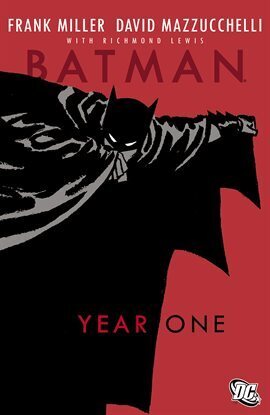
Batman: Year One
While many “best of” lists will put The Dark Knight Returns in the top spot, Year One has not only aged much better, but is also a great starting point for new readers. More so a Jim Gordon story (before he became commissioner) than a Bruce Wayne story, Year One is an amazingly dark, moody introduction to Gotham City before Joker and Batman’s colorful cast of villains took over. Artist David Mazzucchelli basically gives a masterclass on precise, understated cartooning and deserves as much credit as Miller for making Year One one of the greatest Batman comics of all time. Actually, make that one of the greatest comics of all time.

Batman: The Long Halloween
A major inspiration for The Batman starring Robert Pattinson, The Long Halloween excellently shows off the detective side of Batman. Like Jeff Loeb’s later masterpiece, Hush, The Long Halloween finds Batman solving a mystery that’ll have you guessing until the very end, while also featuring appearances by Batman’s iconic foes, like Joker, Riddler, and Scarecrow. Loeb’s longtime collaborator Tim Sale once again demonstrates an immense understanding of Batman’s world, with a heavy use of silhouettes and exaggerated features. While The Long Halloween is arguably the best collaboration between Loeb and Sale, it was neither the first nor the last, so also check out the exceptional Haunted Knight, Dark Victory, and Catwoman: When in Rome. And if the Man of Steel is more your speed, there’s also Superman: For All Seasons.
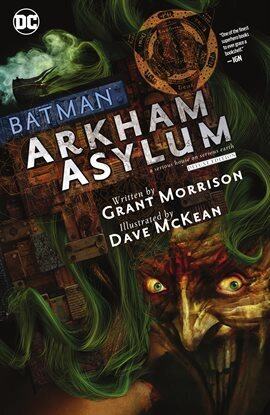
Batman: Arkham Asylum
Weird, unsettling, and decidedly postmodern, Grant Morrison’s Arkham Asylum would not only foreshadow their future as one of the most radical, iconoclastic Batman writers of all time, but also the dark, mature, and experimental comics of the ‘90s typified by DC’s Vertigo line. The premise is relatively simple: the inmates of Arkham Asylum have broken out of their cells and have threatened to kill the staff unless Batman pays them a visit. Batman obliges, and in the process not only faces some of his most notable adversaries, but learns about the dark history of Arkham Asylum—a history characterized by extreme mental illness that haunts the building to the present day. A treasure trove of allusion and symbolism, Arkham Asylum also operates as just a really creepy Batman story, which is aided in large part by Dave McKean’s rather exaggerated and abstract art. If you liked the Arkham video games, try out this comic that inspired them (it doesn’t even require you to collect Riddler trophies).
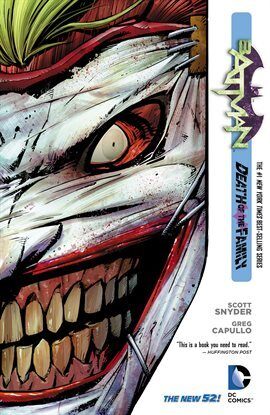
Batman Vol. 3: Death of the Family
While the DC’s “New 52” reboot in 2011 is now looked back on as disappointment, Batman mastermind Scott Snyder gave us some instant classics, first in the opening storyline, “Court of the Owls,” and then with “Death of the Family” (Snyder’s Swamp Thing and Jeff Lemire’s Animal Man being the other high points of this era). Maybe the best Joker story ever written, “Death of the Family” (a play on the iconic “A Death in the Family” storyline by Jim Starlin and Jim Aparo), Snyder shows why the Dark Knight’s greatest adversary is truly terrifying. When the Joker decides he missed the old days when it was just Batman and him (without the pesky “Bat Family”) he targets those closest to the Caped Crusader—Robin, Nightwing, Batgirl, Red Robin, and Red Hood. Ultimately, this book is about the fear that comes from trying to protect those you love, and as much as he may not want to admit it, Batman has to face that just like everyone else. And if your reference point for penciller Greg Capullo is his work on Image comics like Spawn and The Creech, this art on Batman is an excellent showcase of his skill as a visual storyteller.
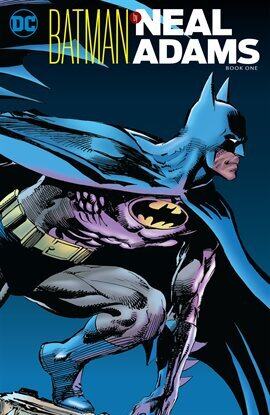
Batman by Neal Adams Vol. 1
After making some major contributions to Deadman and X-Men in the late 1960s, Neal Adams would work on two landmark comics in 1970: Green Lantern/Green Arrow and Batman. More than probably any comic artist before him, Adams put Batman in a world where shadows fell naturalistically and capes creased and flowed in the wind—a huge step toward portraying the Caped Crusader in the real world. In addition to having a mastery of anatomy and detail, Adams also brought a dynamism to page layouts that almost rivaled Jack Kirby. Most importantly, perhaps, the artist (along with writer Denny O’Neil) returned Batman to his darker roots (this was the era of the Adam West Batman show, after all). He would go on to co-create Bat universe mainstays like Man-Bat and Ra’s al Ghul, and reintroduce the Joker as terrifyingly homicidal in the classic storyline, “The Joker’s Five-Way Revenge!” While Adams would make some questionable Batman books later in his career, his ‘70s output, which would set the tone for how Batman would be portrayed in both comics and film for decades to come, still holds up and is essential reading for any serious Bat fan.
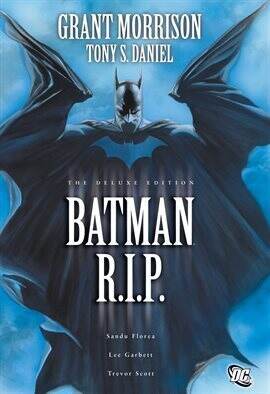
Batman: R.I.P.
In the last 30 years, few people have had the impact on the character of Batman, the Bat Family, and the world of Batman comics like Grant Morrison. When they began writing DC’s main Batman book in 2006, they introduced Bruce’s son with Talia al Ghul, Damian (and in the processes, confirming that Mike Barr and Jerry Bingham’s Son of the Demon comic is canon), would later give the title of Batman to Dick Grayson (the original Robin), and establish Bat people around the world with Batman Incorporated. But perhaps Morrison’s greatest contribution was killing Batman (well, sort of). When an evil organization known as the Black Glove tries to destroy Batman and everything he stands for, Bruce will take the most extreme measures to which he’s ever had to resort. A culmination of not only Morrison’s work on the character, but the entire history of Batman, “R.I.P.” is not necessarily the best starting point for new fans, but is nonetheless a thoughtful, impeccably crafted celebration and deconstruction of the weirdness that is the past eight decades of Batman comics.
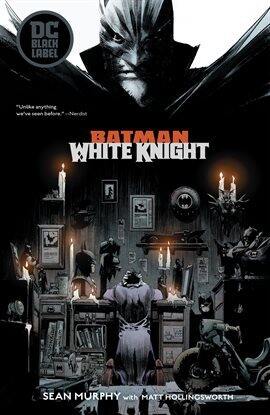
Batman: White Knight
In recent years, Bruce Wayne's mental health and penchant for beating people up while dressed in a costume has become an increasingly discussed topic, and with Batman: White Knight, Sean Murphy takes many of these ideas and runs with them in fascinating, and probably realistic, ways. White Knight flips the script on the dynamic between Batman and the Joker, with the former seen as a violent maniac and the latter running for city council in order to save Gotham from Batman. Murphy asks many of the uncomfortable questions not only about Bruce Wayne, but also the most important relationship of his life: the one he has with Joker. If you like this one, it has numerous sequels.
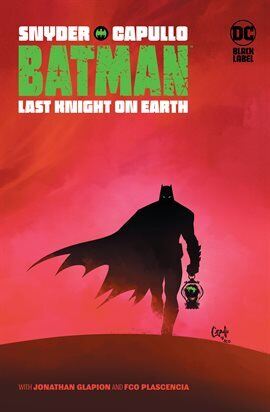
Batman: Last Knight on Earth
As one of the modern-day superstars of Batman comics, Scott Snyder was bound to show up on this list again. And while his first outing with the Dark Knight, "The Black Mirror," almost made the cut, we went with a book that has much more fun playing with the reader's expectations of a Batman comic. Much like the previously mentioned book, White Knight, Last Knight on Earth questions Bruce's sanity while essentially remixing many aspects of his world. After a huge city-spanning mystery leads Batman to a bizarre (yet exceedingly familiar) encounter in Crime Alley (the site of his parents' death), he wakes up in Arkham Asylum, only to discover that everything he thought he knew about his life was wrong. When he eventually escapes, the world is a wasteland, which sets him on a journey for answers. With plenty of appearances from DC's huge stable of super people (just wait until you see the Joker), plus a rather inventive conclusion, Last Knight on Earth is a great Batman story that also challenges what you think you know about great Batman stories.

Batman: Knightfall Vol. 1
The comic event to most directly influence The Dark Knight Rises, the "Knightfall" storyline was a major turning point in DC comics, and its ramifications are still felt 30 years later. Almost directly following the iconic "Death of Superman," "Knightfall" is a rather extensive event that took place over three storylines that spanned all the Bat books: "Knightfall," "Knightquest," and "KnightsEnd." "Knightfall" starts when super genius and steroid user Bane, who had just been introduced in the comics, breaks Batman's deadliest enemies out of Arkham Asylum in order to break Batman down—at least emotionally, that is, until Bane breaks Batman literally. With Bruce out of commission, the much more violent and mentally unstable Jean-Paul Valley takes over as Batman. While Valley is right in line with the typical over-the-top, brutal heroes of the 1990s, it turns out that this might not be a good thing. While "Knightfall" is a lot to parse through, it introduces some genuinely interesting ideas to the Batman mythos while showing Bruce at his most defeated.
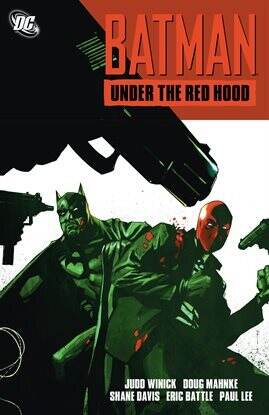
Batman: Under the Red Hood
The same year that Marvel controversially brought back a previously dead character who would become immensely popular in the form of the Winter Soldier, DC did the exact same thing with, well…I won't spoil it for you. One of Batman's earliest adversaries, the Red Hood provides a lot of baggage to Bruce's life (for more on that, you may want to read Alan Moore and Brian Bolland's The Killing Joke, but skip the cartoon), so when someone dressed as the character appears years later, things are bound to get messy. The new Red Hood takes over the gangs of Gotham, tortures the Joker, and eventually comes face to face with the Bat Family. Without giving too much away, above all, "Under the Red Hood," written by Judd Winick, is a great storyline because it forces Bruce to confront one of his greatest failures, while also raising plenty of questions about what it means to team up with the Dark Knight. Doug Mahnke predictably provides serviceable artwork for this storyline, but the painted covers by Matt Wagner of Sandman Mystery Theatre and Grendel fame are worth checking out, even if you don't actually read the book.
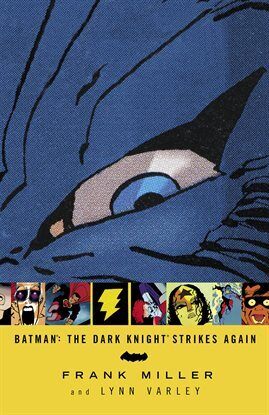
Honorable Mention: The Dark Knight Strikes Again
Let’s get this out of the way: The Dark Knight Strikes Again (the highly anticipated sequel to the beloved and massively influential The Dark Knight Returns) is one of the most reviled (or at least disappointing) Batman comics of all time. Continuing the story of the previous comic series, Strikes Again follows Batman as he, along with the help of the newest Robin (now called Catgirl) and an army of young mutants, tries to stop the dictatorship of Lex Luthor—which will be tough, considering Superman, Wonder Woman, and Captain Marvel are working for the government. Featuring some of the messiest, most incomprehensible art of Frank Miller’s career up to that point (Holy Terror would be much worse), this book often feels rushed, thematically confused, and on top of that, there is a grotesque, artificial sheen of digital colors that was typical of late ‘90s, early ‘00s comics. That being said, it is iconoclastic to an almost amazing degree. It breaks basic storytelling conventions (even when it shouldn’t), it breaks superhero comic conventions (even when it shouldn’t), and has so little respect for traditional views on the superhero genre and comic book medium, it is genuinely impressive. Is The Dark Knight Strikes Again a good comic? No, not at all. It’s a mess. Does it make you think about vigilantism, social revolution, technology, oppression, pop culture, and mass media? Does it challenge your understanding of classic, established characters and the ways you can tell a story in comic form? Does it make you think about page layouts, pacing, clarity, and comic production techniques? Does it challenge the boundaries between high and low art, between prestige comics and trash? Does it elicit an immediate visceral, emotional response? Does it make you reevaluate the world in which The Dark Knight Returns was created, as well as the one 15 years later in which The Dark Knight Strikes Again was created? Does it make you pore over the artwork over and over again to make sense of it? Or throw the whole book down in rage? I would say yes to all of that. And that’s more than most comics can hope to achieve. Later Dark Knight sequels would, by most standards, be more competently written and drawn, but none would be as fun or elicit such a response.
Did you like this blog post? Keep up to date with all of our posts by subscribing to the Library’s newsletters!
Keep your reading list updated with our book lists. Our staff love to read and they’ll give you the scoop on new tv-series inspired titles, hobbies, educational resources, pop culture, current events, and more!
Looking for more great titles? Get personalized recommendations from our librarians with this simple form.

